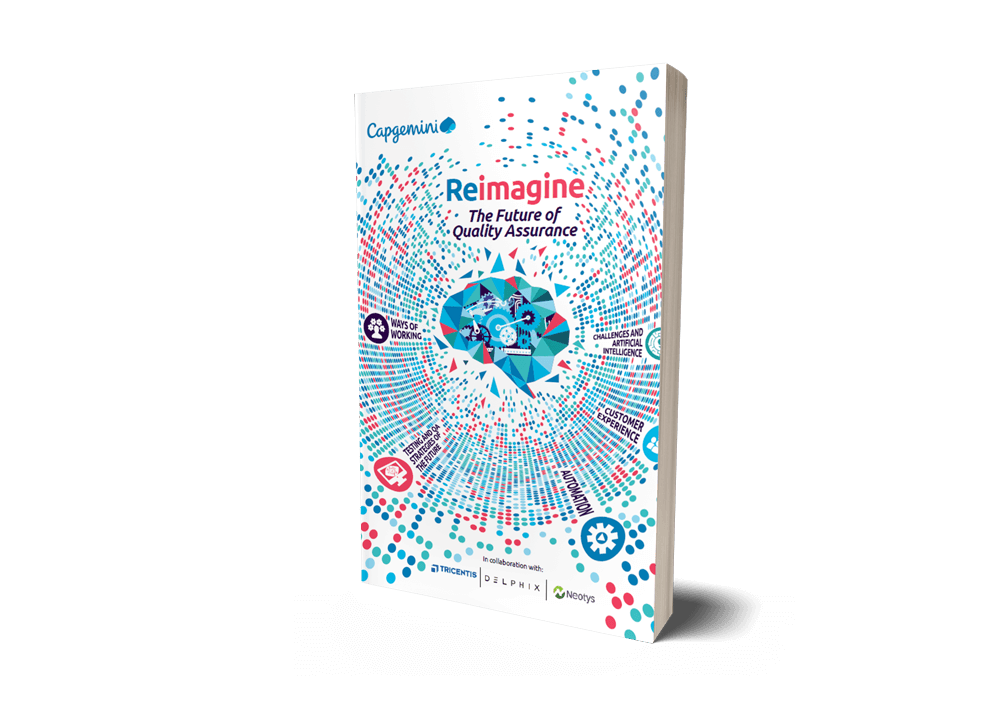
The Forrester Wave™: Autonomous Testing Platforms
As part of its market research, Forrester evaluated 15 autonomous...
McDonald’s IT leaders discuss the role of QA in the crew and customer side of their business.
This blog is the first in a new series featuring IT leaders who have driven successful quality transformations across organizations such as AGL, AXA, Equifax, and Zurich. These first-hand accounts are excerpted from the Tricentis-sponsored Capgemini report, Reimagine the future of quality assurance.
David McMullen, Director of Technology, McDonald’s
Matt Cottee, Manager – POS Systems, Cashless, Digital and Technology Deployment, McDonald’s
McDonald’s is the world’s leading global foodservice retailer with over 38,000 locations in over 100 countries. Approximately 93% of McDonald’s restaurants worldwide are owned and operated by independent local business men and women.
From a global tech space, we report into our Global Technology team. We are split into five disciplines in market. The first is IT solutions, everything back of house including back office, crew communication, engagement and recruiting. The second is Technology, which focuses on restaurant technology including point of sale (POS), kiosk, or associated peripheral systems. Basically, everything the customers and crew touch that allows us to make burgers and fries, and sell them to our customers. Then there’s Support, which includes our restaurant support desk and on-site maintenance.
We have Foundations, which is the bare bones of the restaurant infrastructure network, our corporate side of operations, our corporate internet, and our restaurant internet. Finally, Digital which is obviously the big future play. We enable the technology, and the Digital team own everything the end user sees and experiences – the customer journey, the customer touch points and all that’s associated with those, including menu boards.
Where Quality Assurance (QA) plays a significant part is in that technology space which is the crew and customer side of things – kiosk and point of sale.
As a global team, we are part of what McDonald’s calls the lead International Operated Markets which are the five key countries: Australia, Canada, UK, Germany and France. We are on the cutting edge of our technology and development and are used as a leader and, in some cases a pilot market, to test and validate certain technologies that don’t exist today in our restaurants. We listen to our customers to try to understand what they want and how they want to engage with us, and then we work with our global development team in collaboration with our local Operations team, to scope out the features and functionality and get them into a QA test environment.
Back office is a little bit different than anything front of house because it’s generally a different model. The technology in the digital space is typically led by the global business, however with the back office, the markets determine what’s best for their needs. Imagine how hard it is to have a POS solution across 35,000 restaurants in the system that is fit for purpose, that takes into account the different tax rules, the different requirements, different cashless priorities and everything else needed to have a back office system, that then has to account for tax reporting, and payroll and scheduling rules.
As a result, decision making is a little bit different. The testing is as robust as ever but it also requires more understanding of the complete business and how it operates. For instance, how to do a profit and loss (P&L), how to understand how an inventory works, how to do a schedule, how to do payroll reporting, making sure we meet all our payroll requirements from a government reporting perspective and considering the management implications on the payroll system of a franchisee. When we talk about our customers, we don’t just talk about the people that come into our restaurants – we talk about our franchisees, as well, because they are our business customers. We have, around 253 franchisees in Australia that own approximately 86% of restaurants, so a significant portion of our restaurants are franchised.
If you look at retail and business in general, these days everybody has an app and everybody has a channel to communicate one-on-one with their customer base. It’s equally important for us to have that channel with our consumer base. It doesn’t necessarily mean we need to have an app because everybody else does, but our customers were telling us that they wanted that connection. They wanted to have the rewards and the loyalty program. It’s also another way for them to engage with us on a convenience level.
Originally, our approach was very much Waterfall and some segments of the business still use it, but the digital space uses a far more iterative approach. We’re getting drops of code or software monthly; we’ve taken the approach globally that it’s not okay to wait six months for something that’s 100 per cent to complete because it’s probably not going to be. So it’s about providing small, bite size functionality or features on a more routine, predictable basis – monthly – that we can keep building upon.
How we test and pilot also needs to shift in line with the design. We have multiple labs set up – testing, development, the whole kit and caboodle – and we go through each of those phases quickly because we know what our requirements are and what we’re testing against. We can move through the testing cycle quickly because we know what the requirements are. We pilot in market, do a test in a restaurant, and then we extend the pilots to build confidence.
It’s one thing to have it working in the lab, but it’s another thing to have it working in a restaurant because it’s a different environment and we need that confidence of it being in a restaurant and stable for a period of time before we start talking about mass deployment across the country.
Our CEO since 2014 has used the mantra of progress over perfection – let’s do the things that we can do quickly to get them into the hands of our customers and crew, and improve it over time. It doesn’t work for everything because there’s security and compliance that must be kept front of mind when it comes to any sort of technology, which is incredibly important. Whereas testing and QA in the past has always been a segmented piece on your roadmap; delivery would be a particular day, so there would be a testing phase, followed by QA, the pilot would begin and so on. Now it’s an ongoing conversation that never stops; it’s a by-product of what we do day-to-day.
It’s also important to understand that technology within the McDonald’s world isn’t necessarily the same as that which is found elsewhere. Our first function is to be a strategic enabler of the business. If Marketing wants to do a promotional activity, we have to enable that. If Operations need the screens around the restaurant to show something in a particular way, that’s our first job. We are trying to enable the business plan we’ve set out for the next 18 months, and then there are times when an idea comes up and there are challenges around how we bring it to life, particularly now that there are multiple customer facing platforms to consider. It’s a hard world to live in.
As far as the analytics go, we have all the obvious hooks than you would expect in our customer-facing platforms to be able to feed into an Adobe platform and see the customer journey – what people are clicking on, their path from order to delivery and whether there are any friction points within that journey. Our Digital and Insights team interrogate that data and information, and that forms the basis of how we construct our menu on the customer facing platforms so it has the least amount of friction possible.
From a customer perspective, we take data privacy and security very seriously, which includes compliance with Payment Card Industry Data Security Standard (PCIDSS). At the core of this is ensuring we are keeping our customers’ data and card information secure. When we talk about the security of our platforms, including security penetration testing of any new platform, we’re talking end-to-end validation for PCI reasons and ensuring we aren’t storing customer information in plain text and are complying with everything else that is required.
We have global teams that set very clear processing guidelines as to how we adhere to this security and compliance, and we follow all requirements. It’s pertinent that we comply fully given the complex nature of a business of our scale. We’re not in this space to play a risky game – we have to be really, really careful.
We have some great partners and suppliers that work with us to ensure our systems are secure, that we have the right hardware, and the right architecture from a network segmentation perspective. At the end of the day, we’re a burger company, not a security company – but it’s our responsibility and we have the right partners to allow us to ensure the security of every single customer.
***
For additional insights from quality leaders, read the complete 100+ page Capgemini report, Reimagine the future of quality assurance.


As part of its market research, Forrester evaluated 15 autonomous...

Scale testing, ensure compliance, and modernize legacy systems with...

Gain unprecedented visibility into your agentic AI toolset with...

Watch our webinar to find out how Tricentis Tosca and Data...

Learn the key elements of a data integrity strategy that can help...

Experts explore why friction persists in even the most advanced...